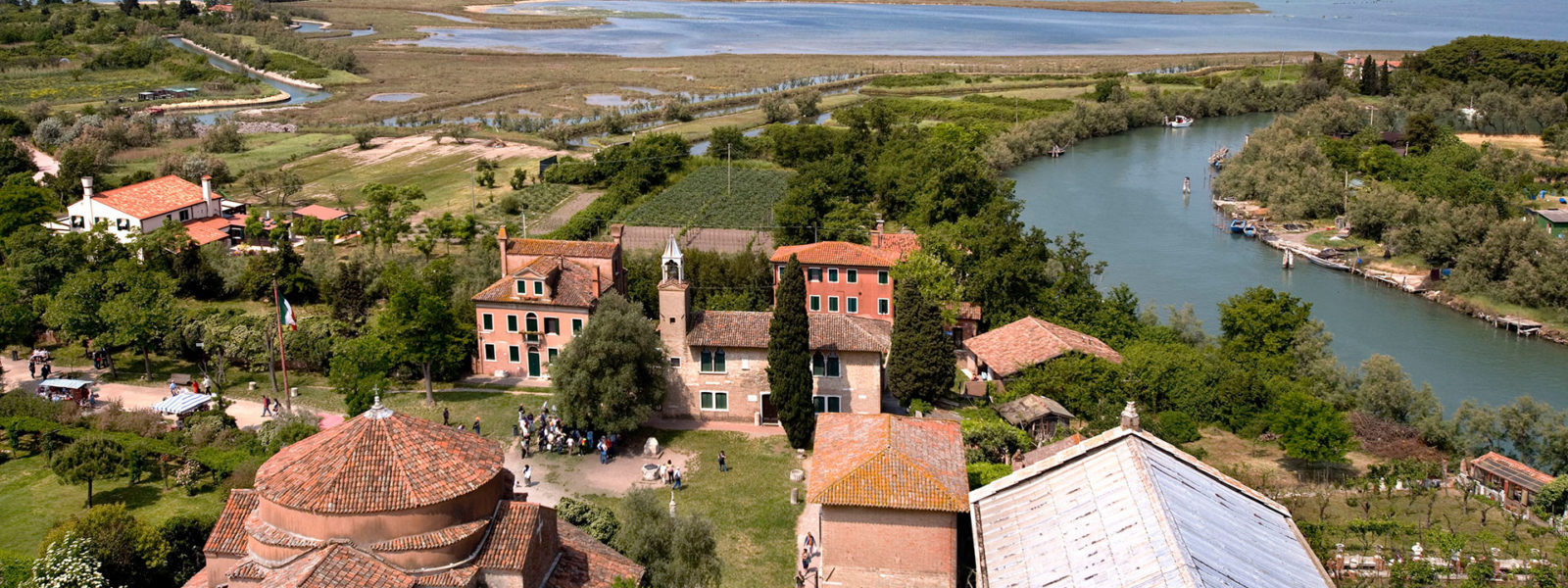

Mid-august in Torcello
L’isola di Torcello, l’avete mai considerata?
Storia, religione e leggende ricoprono questa isola di ormai 13 abitanti.
Pensare che Torcello fu una delle prime isole in cui si rifugiò la popolazione di Altino, mentre fuggiva dalle invasioni barbariche; Fu sede vescovile dal 638 al 1689 ed arrivò ad ospitare quasi 20.000 abitanti.
Divenuta nel tempo centro importante di traffici marittimi, tra cui soprattutto quello della lana e del sale, il suo patrimonio archeologico era così fiorente che l’isola veniva chiamata ‘Piccola Bisanzio’.
La chiesa di Santa Maria Madre di Dio, a partire dal 639 fu la nuova sede alla cattedra di Altino, successivamente nel 1008 venne riedificata e riconsacrata a Santa Maria Assunta per desiderio del Vescovo Orso I Orseolo, figlio del Doge Pietro II Orseolo: a tale ricostruzione risale l’attuale cattedrale.
Nel XV secolo, nonostante il progressivo declino della città finisse pe trasformare l’isola in logo solitario e semi-abbandonato, la chiesa continuò a mantenere il rango di Cattedrale fino all’anno 1818, ad oggi è sottoposta al Patriarcato di Venezia.
Oltre storia e religione, Torcello nasconde la leggenda del Ponte del Diavolo.
Si racconta che durante l’invasione Austriaca, una ragazza Veneziana si innamorò di un giovane ufficiale dell’esercito, l’unione non era ben vista dalla famiglia di Lei che fece di tutto per evitare la storia d’amore.
La ragazza venne allontanata da Venezia fino a che non ricevette la notizia dell’assassinio del suo giovane amato; presa dalla disperazione, un amico di famiglia le consigliò di andare da una strega.
Una volta incontratesi, la giovane stipulò un patto con il Diavolo: 7 anime di bambini cristiani in cambio del giovane Austriaco.
La strega quindi si accordò con il demone per la consegna delle anime, il 24 Dicembre.
The island of Torcello, have you ever considered it?
History, religion and legends cover this island of now 13 inhabitants.
To think that Torcello was one of the first islands where the population of Altino took refuge while fleeing from the barbarian invasions; It was an episcopal seat from 638 to 1689 and came to be home to nearly 20,000 inhabitants.
Over time it became an important center of maritime trade, including especially wool and salt, and its archaeological heritage was so flourishing that the island was called ‚Little Byzantium‘.
The church of St. Mary Mother of God, beginning in 639 was the new seat to the chair of Altino, later in 1008 it was rebuilt and re-consecrated to St. Mary of the Assumption at the wish of Bishop Orso I Orseolo, son of Doge Peter II Orseolo: the present cathedral dates from this reconstruction.
In the 15th century, despite the fact that the gradual decline of the city ended up turning the island into a lonely, semi-abandoned logo, the church continued to maintain the rank of Cathedral until the year 1818; to this day it is subject to the Patriarchate of Venice.
Beyond history and religion, Torcello hides the legend of the Devil’s Bridge.
The story goes that during the Austrian invasion, a Venetian girl fell in love with a young army officer, the union was not well liked by her family who did everything to prevent the romance.
The girl was removed from Venice until she received news of the murder of her young beloved; gripped by despair, a family friend advised her to go to a witch.
Once they met, the young woman made a pact with the Devil: 7 souls of Christian children in exchange for the young Austrian.
The witch then agreed with the demon to deliver the souls on December 24.
Returning home, the witch was killed by a young man who, seeing the scene and wanting to save the souls, killed her.
The Devil showed up for the appointment without knowing the fate that befell the witch, so every year, on December 24, the Devil shows up to collect his payment in the form of a black cat.
So, have we convinced you to visit Torcello?
